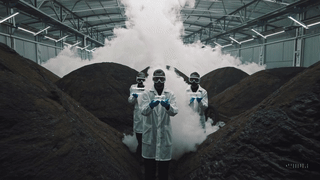WHO’S TRULY BIODEGRADABLE? EXCAVATING THE COMPOSTING MYTHS OF “BIOPLASTICS”
I was pacing around my kitchen at 3 a.m. looking for coffee strong enough to wake the dead, when I discovered a suspicious stack of so-called “bioplastic” cups lurking under my sink like a lost tribe of plastic Trojan horses. The label read “compostable.” My spine tingled. I needed answers: Were these green illusions actually compostable, or just more petrochemical trickery?
Thus began a mad journey into the rabbit hole of compostable “bioplastics”—that wild menagerie of polymers that claims to break down into harmless mulch rather than permanent trash. Let’s dive in, dear reader, and come face to face with these creatures of modern marketing. Along the way, we’ll see which ones are real composting rockstars and which are only making cameo appearances in a swirling sea of false promises. And remember, if they’ve been blended with Polypropylene (PP), you might as well bury them in a time capsule—because those suckers aren’t truly compostable.
1. PLA (Polylactic Acid)
Ah, PLA—the darling of eco-friendly packaging. Derived from renewable resources like cornstarch or sugarcane, it’s often touted as the golden child of compostability.
- Industrial Composting: Give PLA credit where it’s due. With the right certification—like ASTM D6400 (in the U.S.) or EN 13432 (Europe)—it can break down in industrial composting facilities that reach high temperatures of about 50–60 °C.
- Home Compost? Think again. Unless you see a “TÜV OK Compost Home” logo, your backyard pile won’t cut it for standard PLA. You’ll just end up with a half-decayed plastic ghost haunting your soil for months.
- Blended with PP? Kiss those compost dreams goodbye. It’s over. No matter the fancy marketing, once PLA is mixed with PP, it’s like dropping a raw egg in your whiskey sour. You can’t unscramble that mess.
2. PBAT (Polybutylene Adipate Terephthalate)
This one sounds like a top-shelf allergy medication, but PBAT is actually a petroleum-based, biodegradable polymer often mixed with starch or PLA for extra flexibility.
- Industrial Composting: PBAT-based bags that boast ASTM D6400 or EN 13432 can disintegrate nicely in commercial facilities.
- Home Compost? Certain formulations, possibly sporting a “TÜV OK Compost Home” badge, can indeed break down at more moderate backyard temperatures—though they’re not as common as some marketers might like you to believe.
- PP Contamination: If your PBAT is tainted with polypropylene, you’re no longer holding the compostable holy grail. Congratulations, you’ve got a plastic chimera that belongs in a standard recycling bin—if it’s even recyclable.
3. PHA (Polyhydroxyalkanoates)
Produced by microbes gorging on sugar or oils, PHAs are the rare breed that might just degrade in marine environments—making them the talk of beach cleanups.
- Industrial Composting: Many PHA products carry ASTM D6400 or similar certifications. They can break down in municipal facilities at a respectable rate.
- Home Compost: Some PHAs can degrade in your backyard, potentially sporting that elusive TÜV OK Compost Home mark. This is the holy grail of casual composters—no high-heat extravaganza required.
- PP Problem: Should PP sneak into the blend, your proud bioplastic is now more like the mechanical bull at a state fair—totally uncontrollable and definitely not compostable.
4. Starch-Based Bioplastics (TPS: Thermoplastic Starch)
Starch-based films or foams are often used for packing peanuts and produce bags you’ll see at farmer’s markets.
- Industrial Composting: Most of these will degrade—again, look for EN 13432 or BPI certification.
- Home Compost: If you’ve got a serious backyard operation with hot temps and good aeration, you might watch your starch-based items go the way of the dodo after a few months. But check for specific certifications like OK Compost Home if you want real assurance.
5. Cellulose-Based Films
Think of these as the refined older cousin to cheap plastic wraps, often derived from wood pulp. They carry a whiff of sophistication along with potential compostability.
- Industrial Composting: Look for the usual suspects: ASTM D6400, EN 13432, or a BPI label.
- Home Compost: Certain uncoated cellulose films might display a “TÜV OK Compost Home” certification and actually degrade gracefully in your garden heap. But if they’re laminated, coated, or adulterated with polymeric nonsense, you can forget it.
- PP Alert: Even a light sprinkle of PP is enough to lock these cellulose wonders into a half-life that belongs in an atomic physics lab, not your compost bin.
Judging the True Compostability
- ASTM D6400 (U.S.)
- EN 13432 (Europe)
- TÜV Austria’s OK Compost (Industrial or Home)
- BPI Certification (North America)
Without these labels, claims of “compostable” might be as reliable as a politician’s promise on election night. And yes, folks, none of these certifications mean a thing if polypropylene is skulking around in the formula like a party crasher.
Final Note
So there we have it: an inside peek at these so-called compostable bioplastics, their illusions, and their real-world performance. If you’re serious about reducing your plastic footprint, keep those certification logos in your crosshairs, stay away from sneaky polypropylene blends, and remember—unless you’re verifying the claims, “compostable” might just be a marketing fever dream in a single-use plastic paradise.
Go forth, compost responsibly, and don’t let the greenwashers drag you into the poly-limbo of a plastic confessional. This is Dr. Gonzo, signing off.
Sources & Further Reading
- ASTM International – Standard Specification for Compostable Plastics, D6400. Available at: astm.org
- European Committee for Standardization (CEN) – EN 13432: Requirements for Packaging Recoverable through Composting and Biodegradation.
- Biodegradable Products Institute (BPI) – Certification Database: bpiworld.org
- TÜV Austria – OK Compost and OK Compost Home listings: tuv-at.be
- European Bioplastics – Industry data & position papers: european-bioplastics.org



Comments
Post a Comment